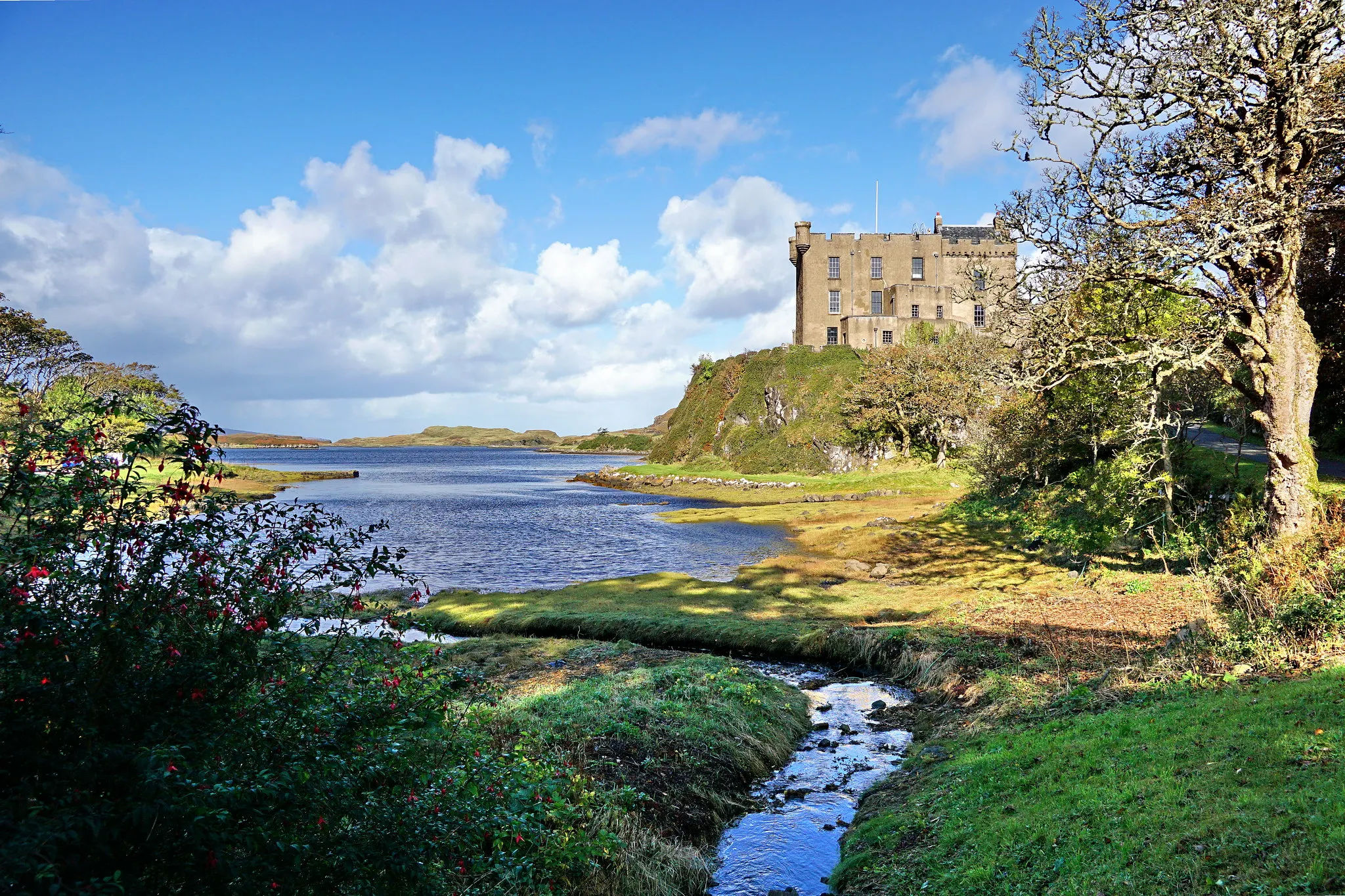The Dunvegan Castle is located on a high rocky promontory on the Isle of Skye, 1.6 kilometers from Dunvegan, off the west coast of Scotland. This castle has been the ancestral home of the MacLeod clan for approximately 800 years. Dunvengan Castle has long belonged to the Macleod clan.
 |
| Dunvegan Castle |
The high rock on which the main bastion stands, 15 meters above sea level, has made the Dunvegan Castle an impregnable fortress throughout history.
The original castle was probably built in the 13th century and developed little by little over the following centuries. The exact date on which Dunvegan Castle was built is not known, but it is known that between the years 1340 and 1460 the third governor of Dunvegan, Malcolm, added a dungeon to the castle.
 |
| Dunvegan Castle |
Around 1500, Alasdair Crotach added to the castle a large tower known as the 'Fairy Tower'. In the 19th century a large-scale restoration was carried out in which the castle was completely remodeled and additional towers and battlements were added to its architecture. This romantic transfiguration of the castle was carried out by Robert Brown between 1840 and 1850. The reconstruction cost 8,000 pounds (8,700 euros approximately).
Dunvegan Castle is the oldest inhabited castle in the north of Scotland. For more than 700 years the castle has remained the ancestral home of the MacLeod clan. Today it is home to the 30th generation MacLeod line. Between 1938 and 1940, the castle was rehabilitated again after a serious fire destroyed most of the south wing.
 |
| Dunvegan Castle |
The entire Dunvegan Castle complex is made up of six separate buildings, five of which are now open to the public. In the sixth building there is an administrative office and the apartments of the current owners.
Dunvegan Castle houses many interesting relics of the MacLeod clan. The most interesting, perhaps, may be the flag of the Fairies "Fairy Flag". On the flag that is now kept in Dunvegan Castle there are two versions of its origin: the mystical and historical.
In the first explanation, the mystique, it is stated that the flag was given by a woman / fairy to one of the first clan chiefs. It was believed that the appearance of the flag on the battlefield necessarily led to victory, as happened at the Battle of Glendale in 1490. Despite the beautiful legend, some historians believe that the famous flag fairy was probably captured by Saracens during the Crusades.
Laboratory analyzes of the flag material concluded that the flag belonged to the period between the 4th and 6th centuries, that is, four hundred years before the first crusade. According to the other version, the historical one, the flag belonged to King Harald III of Norway, who died in the year 1066.
 |
| Armor Inside Dunvegan Castle |
Another heritage from the MacLeod clan of Dunvegan is a ceremonial wooden Dunvegan Cup decorated with silver plaques dating back to 1493. It was performed by Hugh Maguire's wife, Lord of Fermanagh. There are several stories about when this cup came to the MacLeod house. The most likely occurrence was the 16th and 17th centuries.
The museum also displays the personal belongings of the heroine of the Jacobite uprising Flora MacDonald and many other interesting historical artifacts, including unique pieces of knives.
Image of the Macleod clan
The motto of the Macleod clan is "be firm." It is believed that the third head of the clan, Malcolm, (1296-1370) once came face to face with a wild bull. Malcolm was returning from a meeting with a woman from the Fraser clan, owners of the Glenelg area, and came across a bull that lived in the local forests. The bull for a long time was terrorizing the surroundings. Armed with only a Celtic dagger, Malcolm Macleod killed the animal and took one of the horns as a trophy.
 |
| Dunvegan Castle |
After this act, the Fraser clan woman he was reunited with left her husband and left with Malcolm, leading to a long feud between the two clans. An elegant goblet was made from the bull's horn and can now be seen in the Dunvegan Castle museum. According to the tradition of the MacLeod family, each new chief of the clan is obliged to drink red wine from the cup of the horn.
For centuries, a bull's head has crowned the heraldic symbol of the MacLeod clan.
Today visitors to Dunvegan Castle can not only enjoy the museum and the surrounding mountainous scenery, but can also book a boat tour on Lake Dunvegan to see its seal and fish colonies.